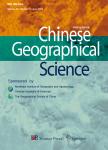Foreign Direct Investment with Chinese Characteristics:A Middle Path Between Ownership-Location-Internalization Model and Linkage-Leverage-Learning Model
Foreign Direct Investment with Chinese Characteristics: A Middle Path Between Ownership-Location-Internalization Model and Linkage-Leverage-Learning Model作者机构:Department of Economic GeographyJustus Liebig University Giessen School of Resource and Environment ScienceEast China Normal University School of Geography Science Nanjing Normal University
出 版 物:《Chinese Geographical Science》 (中国地理科学(英文版))
年 卷 期:2013年第23卷第5期
页 面:594-606页
核心收录:
学科分类:12[管理学] 02[经济学] 080704[工学-流体机械及工程] 08[工学] 0303[法学-社会学] 0202[经济学-应用经济学] 1201[管理学-管理科学与工程(可授管理学、工学学位)] 020204[经济学-金融学(含∶保险学)] 080103[工学-流体力学] 0708[理学-地球物理学] 0807[工学-动力工程及工程热物理] 0705[理学-地理学] 0813[工学-建筑学] 0704[理学-天文学] 0833[工学-城乡规划学] 0801[工学-力学(可授工学、理学学位)]
基 金:Under the auspices of National Natural Science Foundation of China(No.40971069 41101120) State Scholarship Fund by China Scholaship Council Ministry of Education of the people's Republic of China(No.2009614028)
主 题:outward foreign direct investment (FDI) 0wnership-Location-Internalization model Linkage-Leverage-Learning model China
摘 要:The majority of multinational enterprises (MNEs) traditionally originate from developed countries. In the last ten years, however, there has been dramatic growth in foreign direct investment (FDI) from China. It is a comparatively new phenomenon that challenges the classic FDI theories. In this paper, we review the pros and cons of two important theories, known as the Owner- ship-Location-Internalization (0LI) model and Linkage-Leverage-Learning (LLL) model, and use the statistical data and company case studies from China to test the plausibility of these two models. We believe that neither of them suits totally: the OLI model is quite use- fill for understanding FDI from China to developing economies, while the LLL model is more powerful for explaining the FDI to de- veloped economies. We argue that the companies from China attain a very advantageous position as intermediates in the global economy They may catch up with the first movers if they integrate OLI-led and LLL-led FDI within one firm. This combination can bring to- gether the most advanced knowledge acquired in developed economies with the knowledge about adaptation needs and the needs for cost reduction in production as expressed in developing economies. It may also accelerate the knowledge transfer globally. We thus fill a gap in research into the geographical pattern of Chinese FDI and offer a deeper understanding of the internationalization of Chinese MNEs and revolving knowledge transfer.



